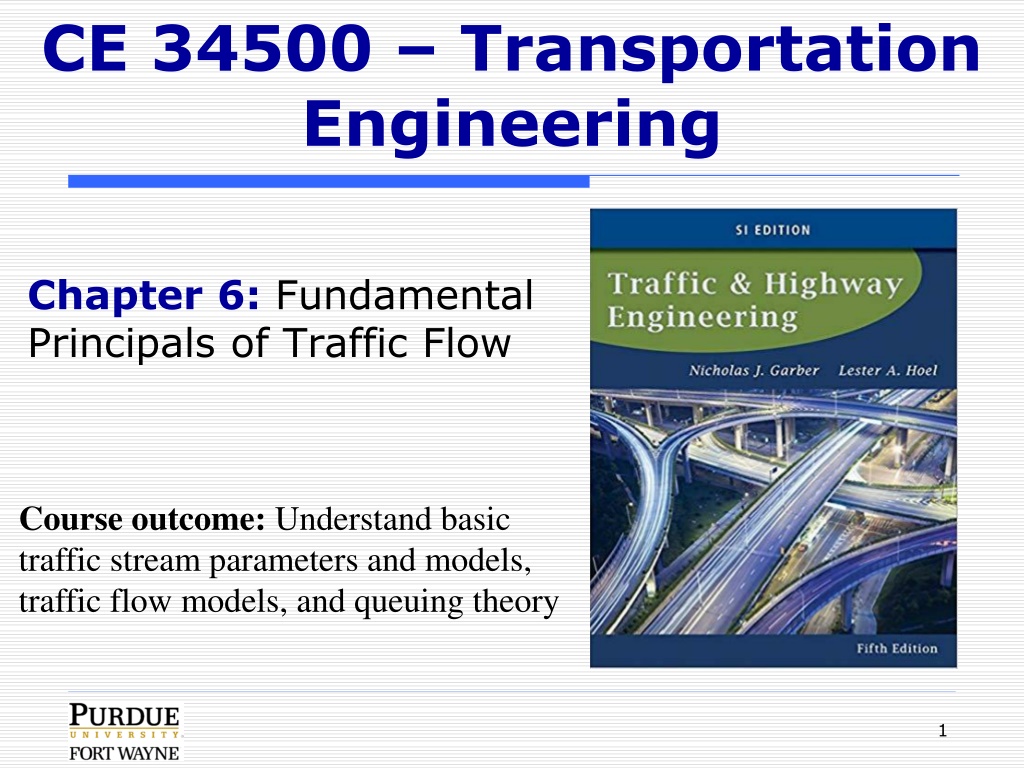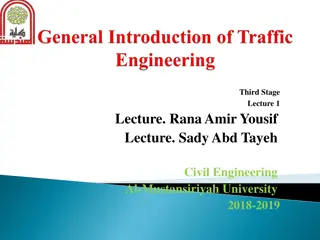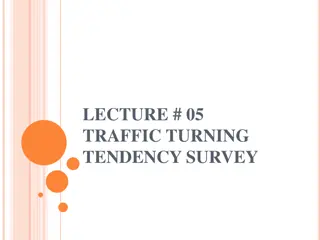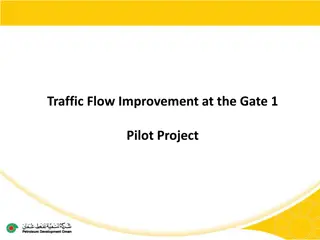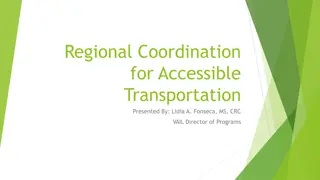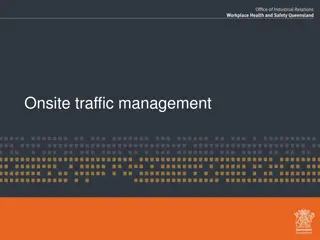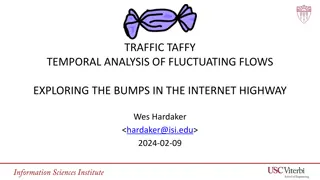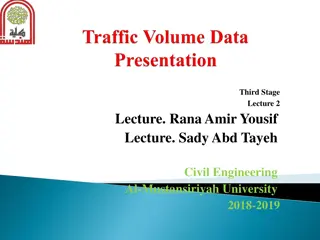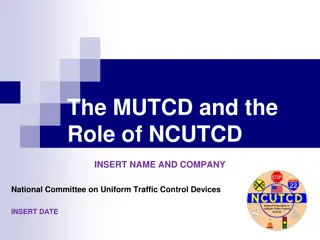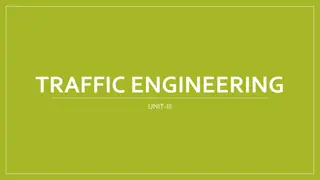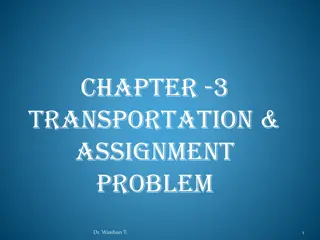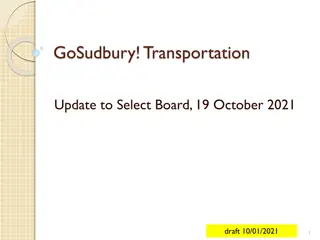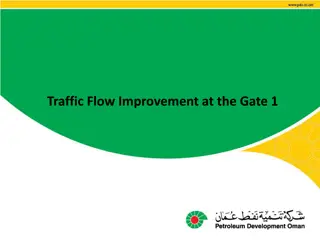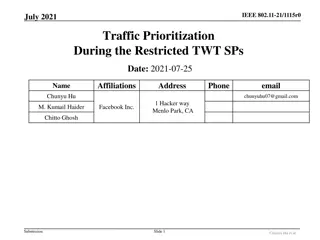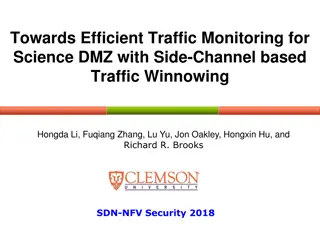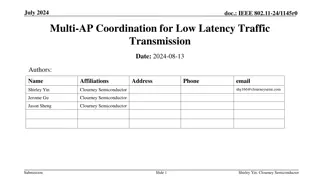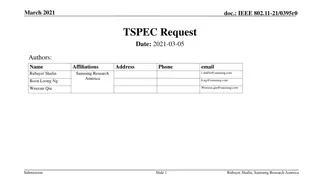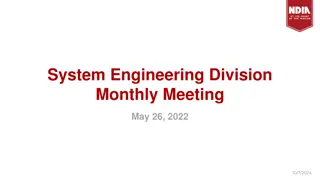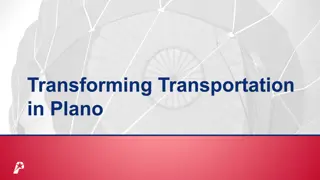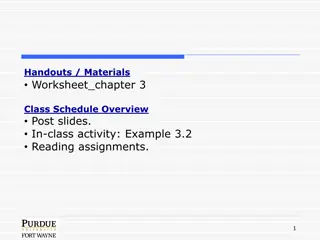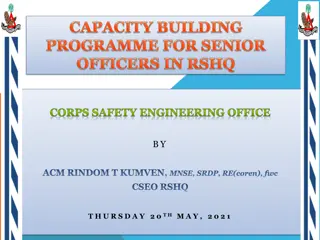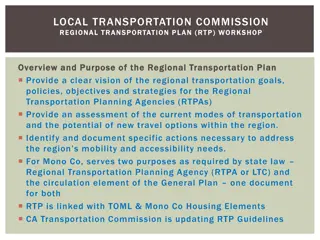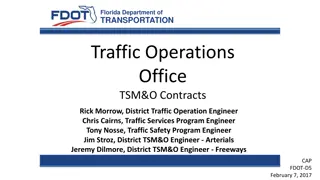Understanding Traffic Flow Elements in Transportation Engineering
Explore the fundamental principles of traffic flow, including primary elements like flow, density, speed, and headway. Learn about time mean speed (TMS) and space mean speed (SMS), as well as concepts such as time and space headway. Discover how these elements contribute to modeling traffic flow and queuing theory in transportation engineering.
Download Presentation

Please find below an Image/Link to download the presentation.
The content on the website is provided AS IS for your information and personal use only. It may not be sold, licensed, or shared on other websites without obtaining consent from the author. Download presentation by click this link. If you encounter any issues during the download, it is possible that the publisher has removed the file from their server.
E N D
Presentation Transcript
CE 34500 Transportation Engineering Chapter 6: Fundamental Principals of Traffic Flow Course outcome: Understand basic traffic stream parameters and models, traffic flow models, and queuing theory 1
Traffic Flow Elements Primary Elements Flow Density Speed Another Element: Headway 2
Traffic Flow Elements Flow: Equivalent hourly rate at which vehicles pass a point on a highway during a period less than 1 hour 3
Traffic Flow Elements Density/Concentration (k) Number of vehicles traveling over a unit length of highway at an instant in time, veh/mile Speed (u) Distance traveled by a vehicle during a unit of time Time mean speed is the arithmetic mean of the speeds of vehicles passing a point on a highway during an interval of time 4
Time Mean Speed (TMS) The TMS is the arithmetic mean of the speeds of vehicles passing a point on a highway during an interval of time. ? ??=1 ? ?=1 ?? 5
Space Mean Speed (SMS) The SMS is the harmonic mean of the speeds of vehicles passing a point on a highway during an interval of time. ? ?=1 1/?? ?? ? ?? = = ? ?=1 ?? The TMS is always higher than SMS 6
Traffic Flow Elements Time Headway (h) Difference between the time the front of a vehicle arrives at a point on the highway and the time the front of the next vehicle arrives at that same point Usually expressed in seconds Space Headway (d) Distance between the front of a vehicle and the front of the following vehicle Usually expressed in meters 7
Time and Space Headway Time Headway Space Headway 8
Traffic Flow Elements Time-Space Diagram: 9
Example 6.1 10
Flow-Density Relationship When the density on the highway is 0, the flow is also 0 As the density increases, the flow decreases When the density reaches its maximum (jam density), the flow must be 0 Flow= Density X space mean speed 11
Flow-Density Relationship Flow= Density X space mean speed 12
Example 6.2 13
Mathematical Relationship Describing Traffic Flow Macroscopic Approach: Considers traffic streams and develops algorithms that relate the flow to the density Greenshields Model: linear relationship between speed and density Greenberg Model: fluid-flow analogy Model Application Regression Analysis: minimizing the squares of the differences between the observed and the expected values If a dependent variable y and an independent variable x are related by an estimated regression function: y = a + bx Microscopic Approach (Car-Following Theory) Considers spacing between consecutive vehicles and speeds of individual vehicles 14
Greenshield Model Prove: the space mean speed at which the volume is maximum is equal to half the free mean speed. Prove: the density at which the volume is maximum is equal to half the jam density. 15
